Accoustic sensors
REV Ocean is equipped with a wide array of acoustic sensors that will allow us to map the seafloor down to hadal depths, as well as to survey biological communities in the water column.
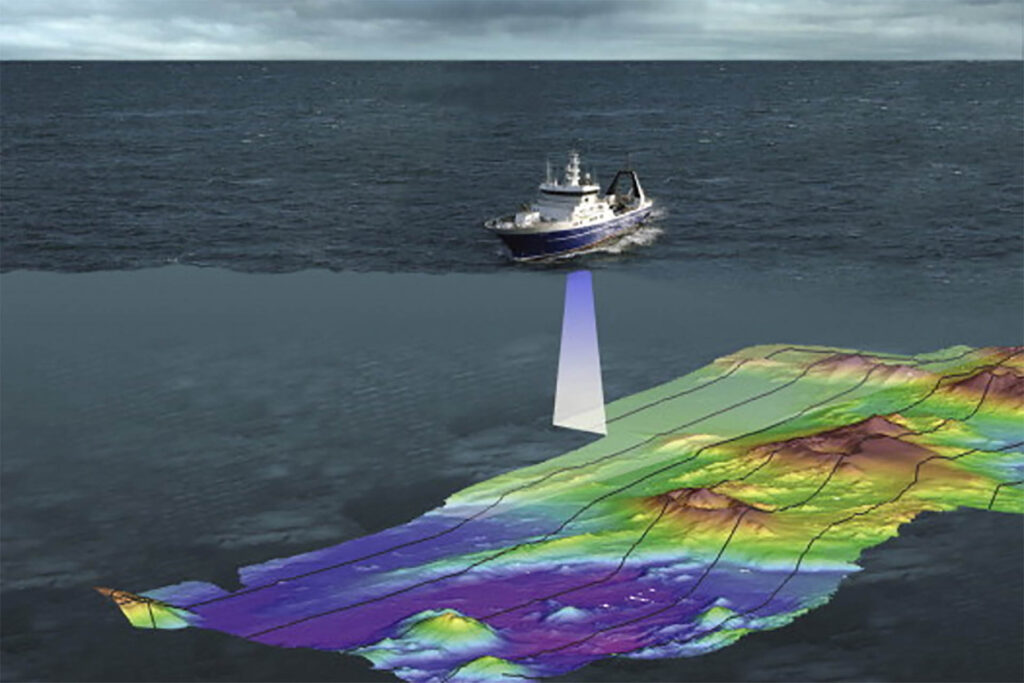
Multibeam echosounders
Kongsberg EM304 Deep water Multibeam Echosounder (26 – 34kHz): The system installed on REV is the 1 x 1-degree array. This system has 1024 beams per ping. In HIDENS mode this is increased to 1600 beams. In addition, the EM304 can also log water column data that can be used to identify gas bubbles from seeps, certain types of biomass and other objects within the water column.
Kongsberg EM712 Shallow-Medium Depth Multibeam Echosounder (40-100kHz): the optimum depth range for using this system is 10-1000 m.
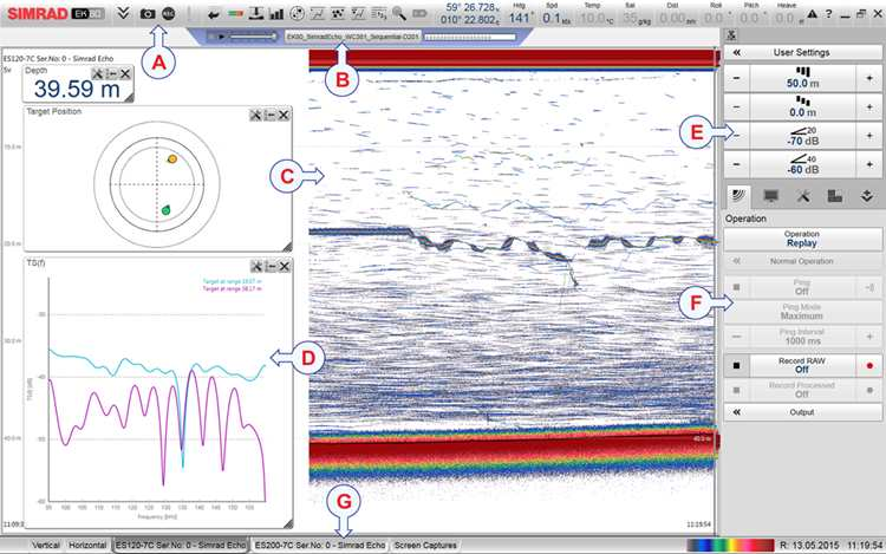
EK80 Split-Beam Fisheries Echosounder (18,38,70,120,200,333 kHz)
REV Ocean is equipped with a Simrad EK80 split beam echosounders. This system is commonly used for fisheries stock assessment and marine ecosystem studies. For publication quality data the EK80 requires calibration to determine the measured target strength of known calibration spheres. This process requires the suspension of Tungsten/Copper spheres below the transducers. This process can take a minimum of 24hrs and should be factored into the cruise plan. If you intend to use the EK80 please discuss your calibration requirements with the cruise coordinator.
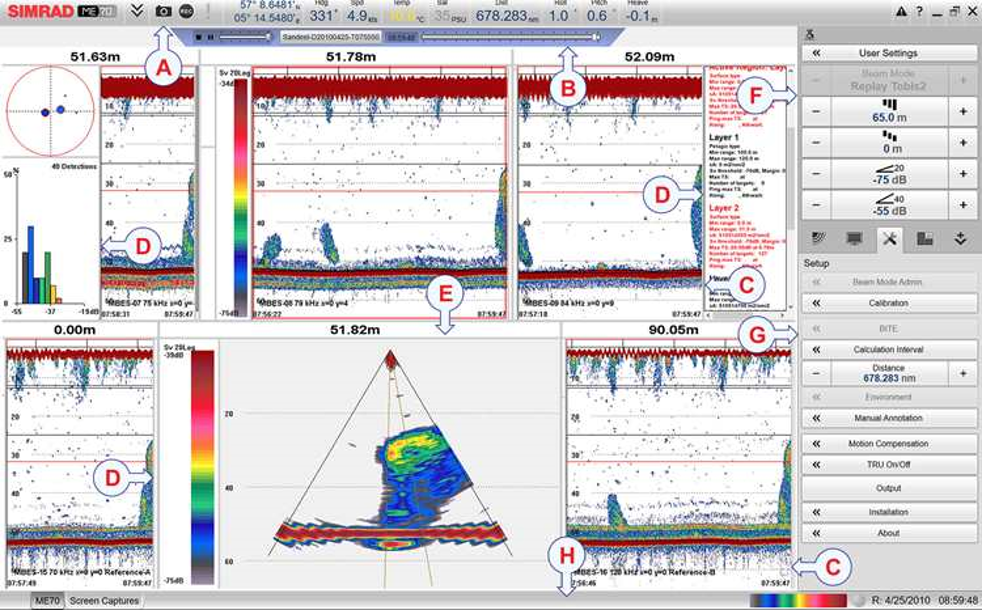
ME70 Fisheries Multibeam
(70-120khz)
The ME70 is a unique multibeam echo sounder and one of only a handful currently available to the global science community. It combines the quantitative element of split beam sounders with the resolution and the extended sampling volume from the multibeam world. In addition to fish and marine mammals, other targets such as methane gas seep and seafloor vegetation can be analysed.
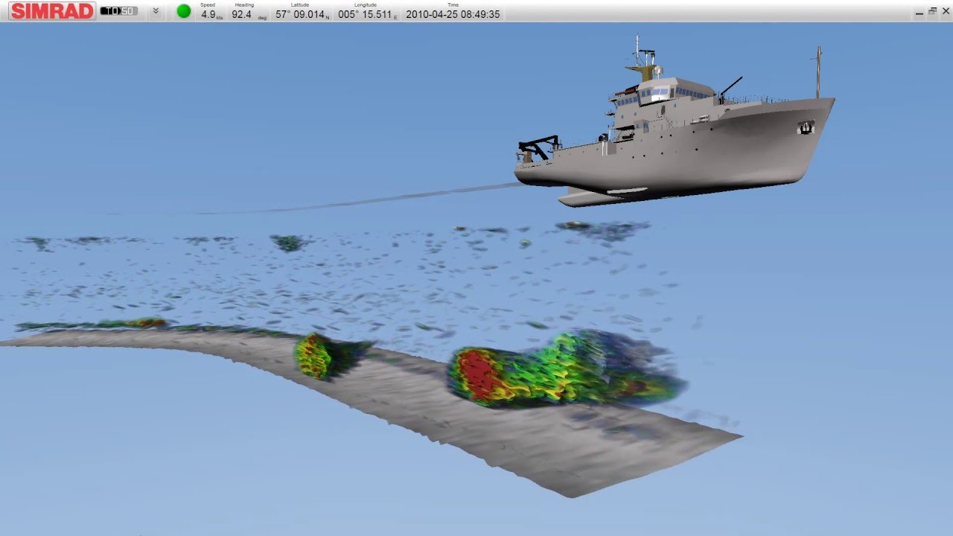
MS70 Fisheries Multibeam
(70-120 kHz)
The MS70 offers a new dimension to fisheries research. As one of the first quantitative fisheries multibeam sonars, it provides an acoustic matrix of stabilized and calibrated beams for biomass estimation, fish school characterization and behaviour studies. It allows characterization and volume estimation of a school of fish using only one single transmission. Schools of fish can be tracked, followed, and studied using multiple consecutive transmissions.
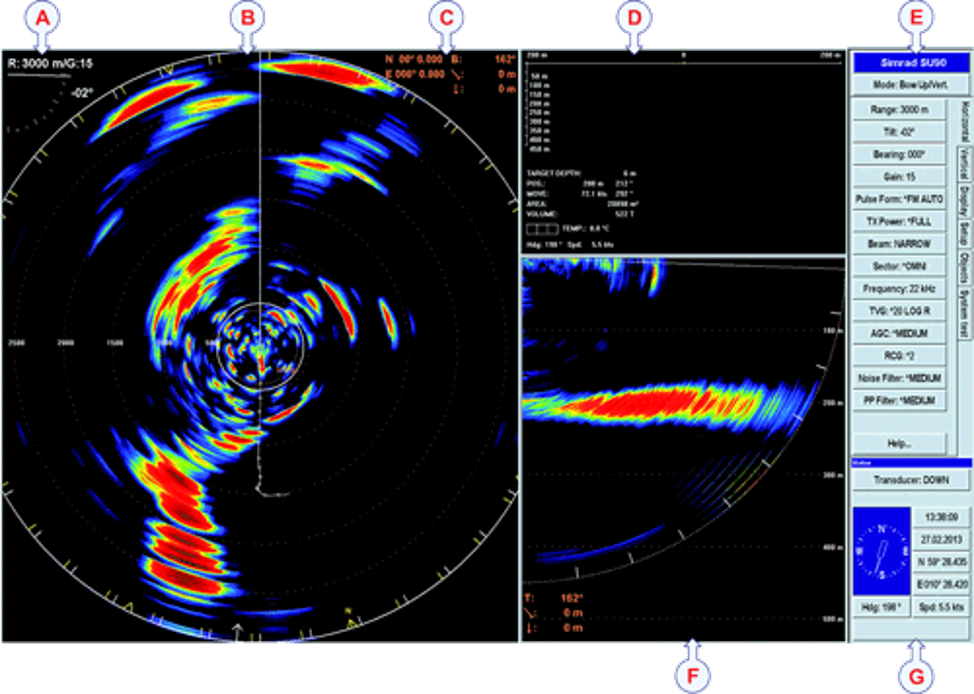
SU90 Fish finding omni-sonar
(20-30 kHz)
The SU90 is a 360-degree Omni-directional, long range, low frequency fish finding sonar. This system is best used in conjunction with our EK80, ME70, MS70 and scientific trawl system. The omni-directional sonar can be used to identify schooling fish that can then be studied with REV Ocean’s scientific fisheries systems.
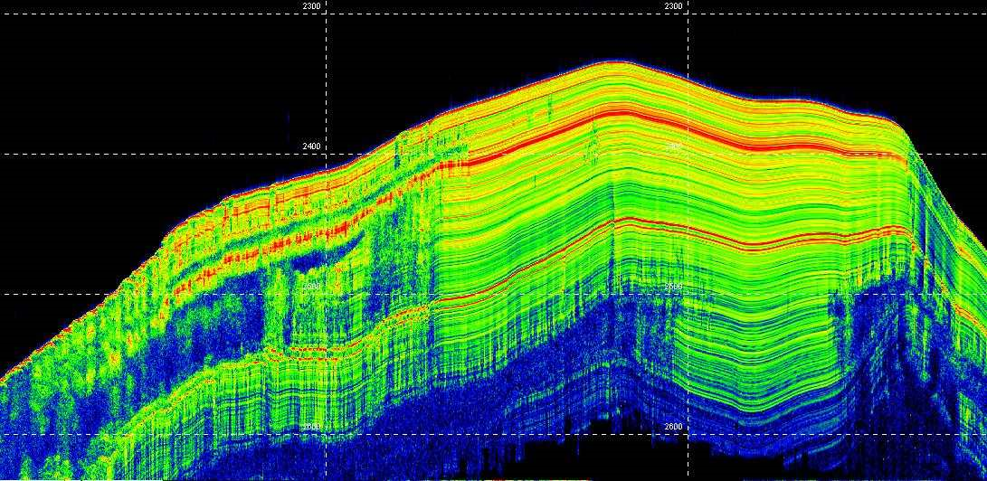
Sub Bottom Profilers (SBP)
SBP29 Sub-Bottom Profiler (2 – 9kHz): The primary application of REV’s SBP 29 is conducting sub-bottom imaging of sediment layers and buried objects.
TOPAS 40 Parametric Sub-Bottom Profiler (1-10kHz): designed for sub-bottom profiling with very high spatial resolution in water depths from less than 4 metres to >2000 m.
SC90 Fish Finding omni-sonar
(82-86.5kHz)
The SC90 system is primarily designed for fishing vessels and has been installed on REV Ocean to support the scientific pelagic trawling mission. The centre operational frequency is 85 kHz, but you can select any operational frequency from 82.5 to 86.5 kHz in steps of 0.5 kHz.
Single-beam Echosounder EA640 (12 kHz)
This is a wide-band single-beam echosounder intended for hydrographic use in deep to medium depth waters. The EA640 can also be used to supply a depth value to other acoustic systems on board, ensuring accurate depth ranging.
Acoustic Doppler Current Profilers (ADCP)
ADCP 38 kHz: deep-water 38kHz system that can monitor currents down to 1000 m depth, with a cell size of 24 m. REV Ocean is one of only a handful of research vessels equipped with a deep-water ADCP.
ADCP 150 kHz: in addition, REV Ocean is fitted with a 150 kHz that monitors currents down to 400 m, with an 8 cm cell size.
Multibeam and Fisheries Post Processing Software
Fisheries Processing Software: Echoview (https://www.echoview.com/). Read data and display echograms from supported systems. Detect the bottom and surface and define other reference lines. Create 3D digital terrain models of the seabed and 3D displays of map data. Perform quality control, conduct analyses on data, and export results for use elsewhere.
Bathymetry/Water Column/Backscatter: Qimera is a multibeam data processing and analysis software used commonly within the oceanographic community. REV operates two licenses for MBES processing. Full sepcification of this system can be found here: https://qps.nl/all-specifications.